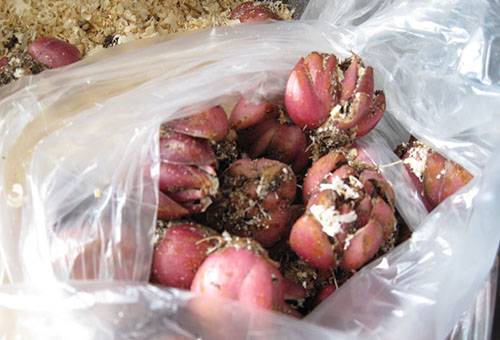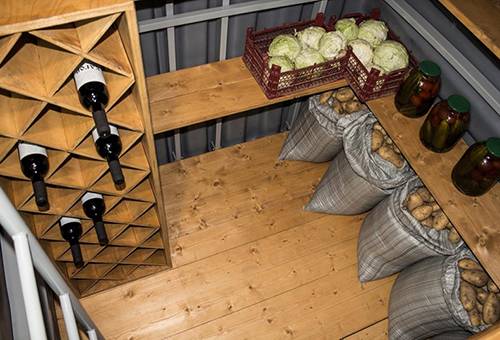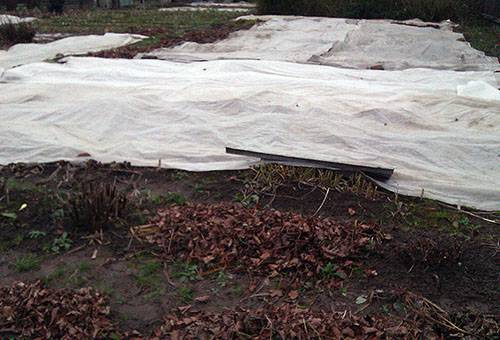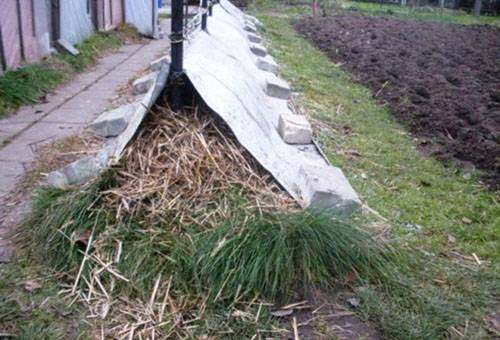Winter storage of lilies at home
Flower growers know many ways to store lily bulbs in winter. But all of them must meet certain storage conditions, even at home, and strictly adhere to them. This applies primarily to the temperature regime: excess heat will provoke premature plant growth, and its deficiency can lead to the death of the bulbs.
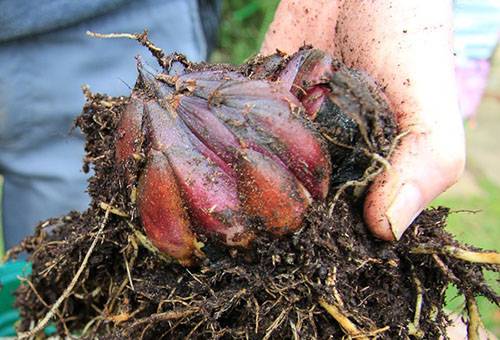
Preparation for storage
The first frost is a signal to dig up lily bulbs in order to store them in winter. When starting this operation, remove dried leaves at a height of approximately 7 cm from the ground surface. Next, you should dig a wider hole so as not to damage the bulb or touch the roots with a shovel, and carefully remove it. After clearing the soil, rinse in cool water and place on a tray to dry, arranging the onions so that they do not fit tightly together. You can fill the gaps between them with dry moss or vermiculite. Be sure to carefully inspect the bulbs and discard any that are affected by rot or disease. If you place the tray in a cool, dark place (shed or garage), they will dry out within a few days. There is a risk of mold growing in a heated room.
Are the bulbs dry? Now it’s a good idea to sprinkle them with fungicidal powder, place them in paper bags (another option is to wrap each tightly with newspaper in several layers), line them with absorbent material (moss, for example.) Then load them into a cardboard box with ventilation holes made.And you can send it to storage: to the balcony, to the basement, to the garage.
Storage methods
- If you are going to store the bulbs in a plastic bag, which is also practiced, first prepare the bag by making small ventilation holes in it. The bottom of the bag is filled with about 10 cm of peat, then lily bulbs are laid, the layers of which are separated from each other by peat, also 12–13 cm thick. We tie the bag tightly and place it in a suitable container or box for winter storage.
- It is sometimes recommended to store bulbs at home in peat planting pots, which are placed in a suitable container - a box, a cardboard box - and transferred to storage. Of course, this is a very convenient method, since they are planted in open ground in the same pots in the spring. A couple of weeks before planting, you can take them out into the light and start watering.
- It happens that the bulbs sprout prematurely if the storage conditions were not met. If it is too early to plant in the soil, you will have to plant the sprouted lilies in pots and place them in a cool and sufficiently lit place.
Available storage
But still, the place where to store the planting material is decisive. The main condition is maintaining a stable temperature regime. Of course, you can adjust a regular home refrigerator to maintain a constant temperature (0 to +3 degrees) throughout the winter. However, it is unlikely that the bulbs will receive sufficient ventilation in this case. In addition, the ethylene released by vegetables and fruits stored in the refrigerator will not create a very favorable atmosphere for lilies. You will have to keep an eye on their condition every now and then and, perhaps, the supply of bulbs may decrease before spring.
Not everyone can boast of having storage in a basement or cellar, where it is, of course, easier to maintain the required regime and achieve the necessary air movement and low humidity. But here, too, control is necessary in the event of a sharp drop in external temperature. By closing and opening the vents as needed, you can maintain a constant temperature.
Advice
During the winter, check the condition of the bulbs after one to two months. Remove any mold that has appeared with a dry soft cloth and sprinkle the affected areas with charcoal powder. Rotten areas must be cut out with a knife with a blade treated with a disinfectant solution, and the cut must be treated with brilliant green. You can bathe them in a solution of potassium permanganate or in Maxim fungicidal liquid. And, of course, the damaged bulbs must be kept separate from the remaining planting material. If the bulbs begin to dry out, wrap them in damp paper or moisten the filler in which they are stored (peat, moss).
Leave the plants in the ground
Many experts believe that lilies can be stored in winter directly in the soil, where they grew. A good snow cover of at least 10–15 cm will be sufficient, and in the case of a snowless winter, shelter with peat, spruce branches, coniferous or leaf litter. Coniferous is preferable, since it will not become a refuge for pests, which in the spring will begin to feed on the bulbs. The cover is removed in the spring, when the soil begins to thaw, and this must be done before sprouts appear. Of course, this can only be done with frost-resistant varieties of lilies. Another subtlety: if Oriental hybrids and OT hybrids overwinter in the ground, then they should go under the snow in dry soil.Therefore, already in the first week of September, the bulbs are covered with polyethylene and removed only when the soil freezes and snow begins to fall. Then the lilies are covered in known ways.
Build a “house” in the ground for the bulbs
It is better to store oriental hybrids or other new hybrid varieties differently, although they can also be stored in open ground. You should dig a small trench, carefully choosing a place for it on your site: the most snowy in winter and the driest in spring. It is important that melt water does not stagnate at the bottom of the trench, so it is better to still try to ensure good drainage and protection from moisture from above. Reinforce the walls of the trench with boards and prepare the lid. Place bags of water along with the pre-packaged bulbs - they will stabilize temperature changes and, in addition, will serve as indicators: if the water in them has turned to ice, it means the bulbs are freezing. And so that the lid can be removed in winter, place plastic film under it so that it does not freeze. Thermal insulation is also necessary - let it be at least layers of cardboard sprinkled with peat. Cover the lid with spruce branches or litter - now you can tell yourself that you have prepared your bulbs for spring awakening.
The growth and flowering of plants will depend on how you stored the planting material. Create optimal conditions for them, and they will reward your work.
